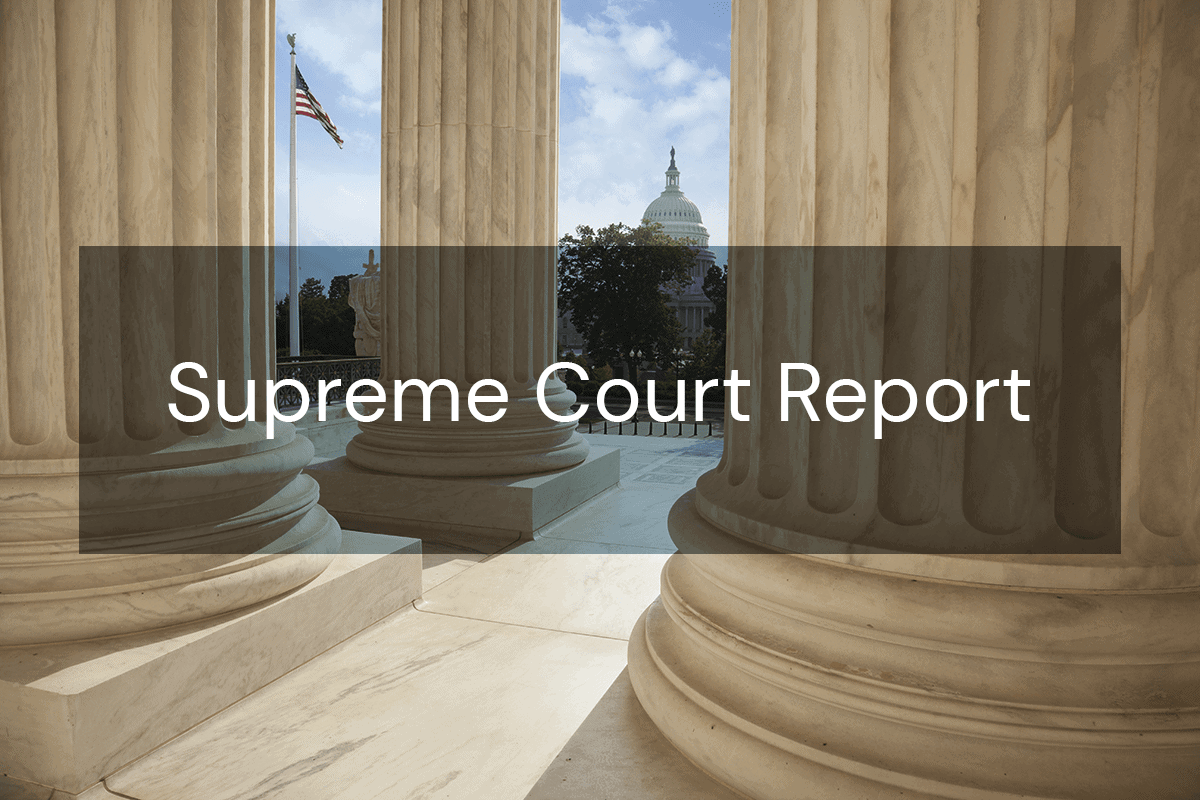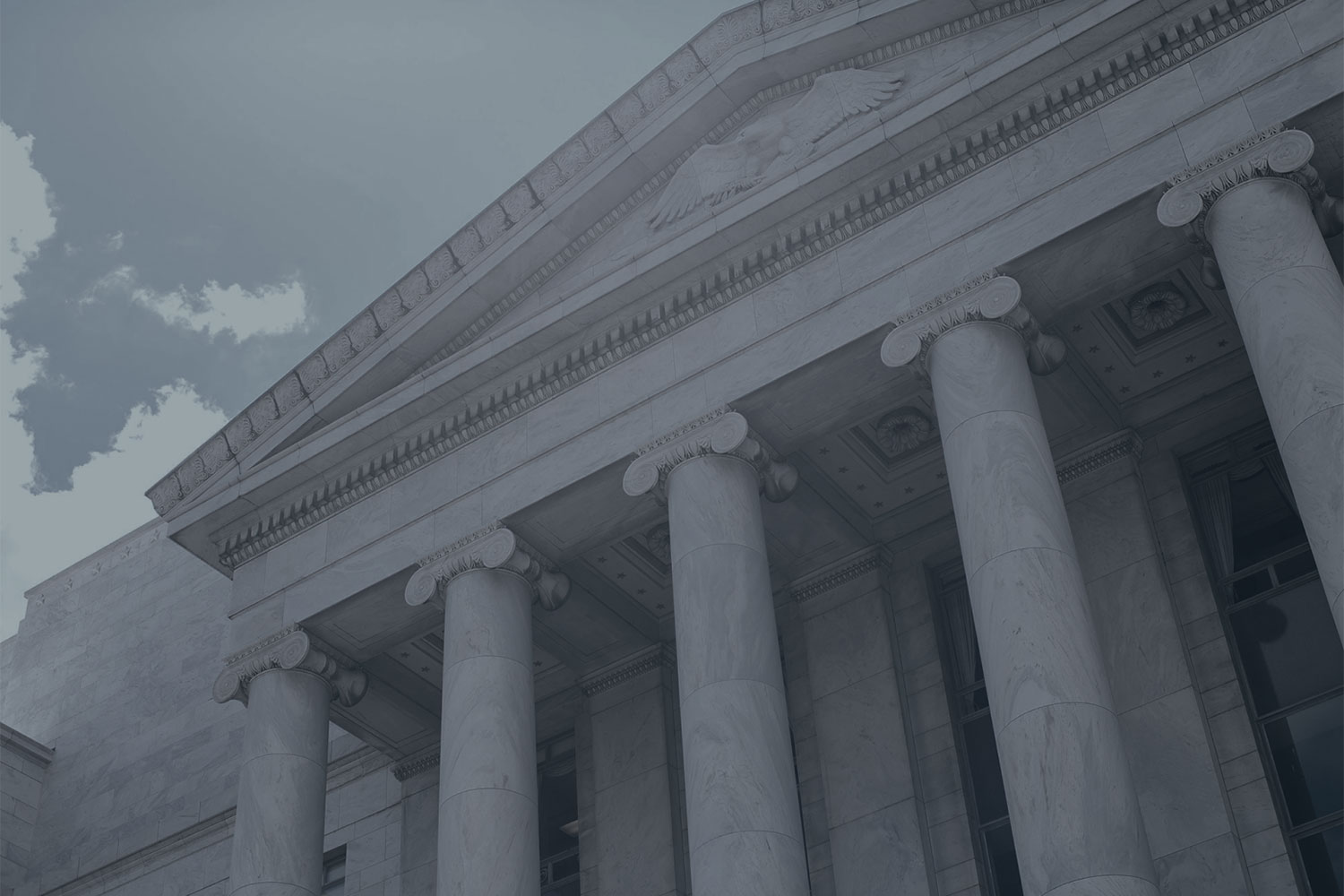-
 Director, Center for Supreme Court AdvocacyNational Association of Attorneys General
Director, Center for Supreme Court AdvocacyNational Association of Attorneys General

This Report summarizes opinions issued on March 23, 24, and 31, and April 4, 2022 (Part I); and cases granted review on March 28, 2022 (Part II).
Opinion: Wisconsin Legislature v. Wisconsin Elections Commission, 21A471
Wisconsin Legislature v. Wisconsin Elections Commission, 21A471. The Court summarily held that the Wisconsin Supreme Court―in adopting a proposed state assembly redistricting map that created an additional, seventh majority-Black district―did not properly conduct the strict scrutiny review required of the “race-based sorting of voters.” To address shifts in the state population based on census data, the Wisconsin Legislature passed new voter districting maps for congressional seats and the state legislature. The Wisconsin Governor vetoed those redistricting maps. At an impasse, the state supreme court took up their dispute along with a voter-challenge seeking to remedy the malapportionment of voters under existing districting maps. Rather than undertake the map-drawing process, the Wisconsin Supreme Court invited interested parties to submit proposals that complied with the state and U.S. Constitutions and Voting Rights Act of 1965 (VRA), and also minimized changes from the existing maps. The state supreme court adopted redistricting maps proposed by Wisconsin’s Governor, which included a map for state assembly that added a seventh and new majority-Black voting district. The Governor claimed the new district was necessary to comply with the VRA. Although the Wisconsin Supreme Court could not say for certain based on the record that the VRA required the new district, it believed there “were ‘good reasons’ to think that the VRA ‘may’ require the additional majority-Black district.” The legislature and individual voters filed an emergency application that sought review on the ground that the court selected the race-based map without sufficient justification, in violation of the Equal Protection Clause. Through a per curiam opinion, the Court “construe[d] the application for stay presented to Justice Barrett and by her referred to the Court as a petition for certiorari, grant[ed] the petition, reverse[d] the imposition of the Governor’s State Assembly and Senate maps, and remand[ed] to the Wisconsin Supreme Court for proceedings not inconsistent with this opinion.”
Before turning to strict scrutiny analysis, the Court discussed violations under §2 of the VRA, which “prohibit[s] the distribution of minority voters into districts in a way that dilutes their voting power.” Violations of §2 occur “if, based on the totality of circumstances,” members of a minority group “have less opportunity than other members of the electorate to participate in the political process and to elect representatives of their choice.” Pursuant to Thornburg v. Gingles, 478 U.S. 30 (1986), demonstrating a §2 violation requires satisfying three “preconditions”: “(1) The minority group must be sufficiently large and compact to constitute a majority in a reasonably configured district, (2) the minority group must be politically cohesive, and (3) a majority group must vote sufficiently as a bloc to enable it to usually defeat the minority’s preferred candidate.” Once the Gingles preconditions are met, courts must “consider[] the totality of circumstances to determine ‘whether the political process is equally open to minority voters.’”
The Court stated that “[u]nder the Equal Protection Clause, districting maps that sort voters on the basis of race ‘are by their very nature odious.’ Shaw v. Reno, 509 U.S. 630, 643 (1993).” But the Court’s “precedents hold that a State can satisfy strict scrutiny if it proves that its race-based sorting of voters is narrowly tailored to comply with the VRA.” The Court accepted the state supreme court’s view that addition of a majority-Black district triggered the Equal Protection Clause and strict scrutiny analysis. But it found that the state court “erred in its efforts to apply Cooper [v. Harris, 137 S. Ct. 1455 (2017)]’s understanding of what the Equal Protection Clause requires.” Under Cooper, a state “must show (to meet the narrow tailoring requirement) that it had a strong basis in evidence for concluding that the statute required its action.” Although the Court was not certain whether the Wisconsin Supreme Court viewed itself or the Governor as responsible for carrying the burden under strict scrutiny, it found that both had failed. The Court rejected the Governor’s explanation that the Black population was sufficiently large and compact to support adding a new majority-Black district. It found that explanation unsupported and “embracing just the sort of uncritical majority-minority district maximization that we have expressly rejected.”
The Court next held that, to the extent the Wisconsin Supreme Court carried the burden under strict scrutiny, it fell short for three reasons. First, the state supreme court misunderstood Cooper for the proposition that narrow tailoring exists if there is good reason to think race-based districting may be required under the VRA. The Court clarified that Cooper requires more: “‘race-based districting is narrowly tailored . . . if a State had ‘good reasons’ for thinking that the Act demanded such steps.’” And, while Cooper allows “breathing room” to make “reasonable mistakes . . . that leeway does not allow a State to adopt a racial gerrymander that the State does not, at the time of imposition, ‘judg[e] necessary under a proper interpretation of the VRA.’” Second, ruled the Court, the Wisconsin Supreme Court did not carefully evaluate the Gingles preconditions, “improperly rel[ying] on generalizations to reach the conclusion that the preconditions were satisfied.” For example, “[t]he court’s entire discussion of the first precondition”―that “[t]he minority group must be sufficiently large and compact to constitute a majority in a reasonably configured district”―“was to say that ‘it is undisputed’ and ‘the parties’ submissions demonstrate’ that seven sufficiently large and compact majority-black districts could be drawn.”
Third, found the Court, the Wisconsin Supreme Court erred in limiting itself to a single factor (proportionality) when considering the totality of the circumstances. “The question that our VRA precedents ask and the court failed to answer is whether a race-neutral alternative that did not add a seventh majority-black district would deny black voters equal political opportunity. Answering that question requires an “‘“intensely local appraisal”’ of the challenged district.” The Court closed by stating that “[o]n remand, the court is free to take additional evidence if it prefers to reconsider the Governor’s maps rather than choose from among the other submissions. Any new analysis, however, must comply with our equal protection jurisprudence.”
Justice Sotomayor, joined by Justice Kagan, dissented and described the majority’s action as “unprecedented,” “extraordinary,” and “unnecessary.” Rather than follow the typical use of summary reversals to overturn violations of settled law, the Court faulted the Wisconsin Supreme Court for not complying with precedent that “is hazy at best.” The dissent emphasized that the lower court found the Governor’s districting map to be “vastly superior” under the race-neutral criteria seeking minimal change from existing districting maps. And the dissent noted that the state supreme court conducted only a preliminary strict scrutiny review, “stress[ing] . . . that no Equal Protection Clause or VRA claim was before it and that adjudicating such claims would require a fuller record and a closer assessment.” Justice Sotomayor pushed back on the assumption that Cooper and its two-step, “burden-shifting framework”—first finding that racial considerations dominated over others, and if so, requiring the state to prove that racial-sorting satisfied strict scrutiny—should apply in this case. Unlike this case, Cooper challenged a districting map drawn by the legislature in the first instance and there was an equal protection claim before the court. Another unanswered question, said the dissent, was “whose motives should be analyzed in these circumstances (the four justices who selected the map based on the ‘least change’ criteria, the Governor, or some combination) or how.” The dissent maintained that the Court’s precedent did not require the Wisconsin Supreme Court to conduct an independent or exhaustive analysis of the Gingles preconditions (which the parties agreed had been satisfied). Justice Sotomayor believed the Equal Protection and VRA issues had been preserved and should be allowed to unfold in a suit by an appropriate plaintiff bringing Equal Protection Clause and VRA claims in an appropriate forum.
[Editor’s note: Some of the language in the background section of the summary above was taken from the petition for writ of certiorari and brief in opposition.]



